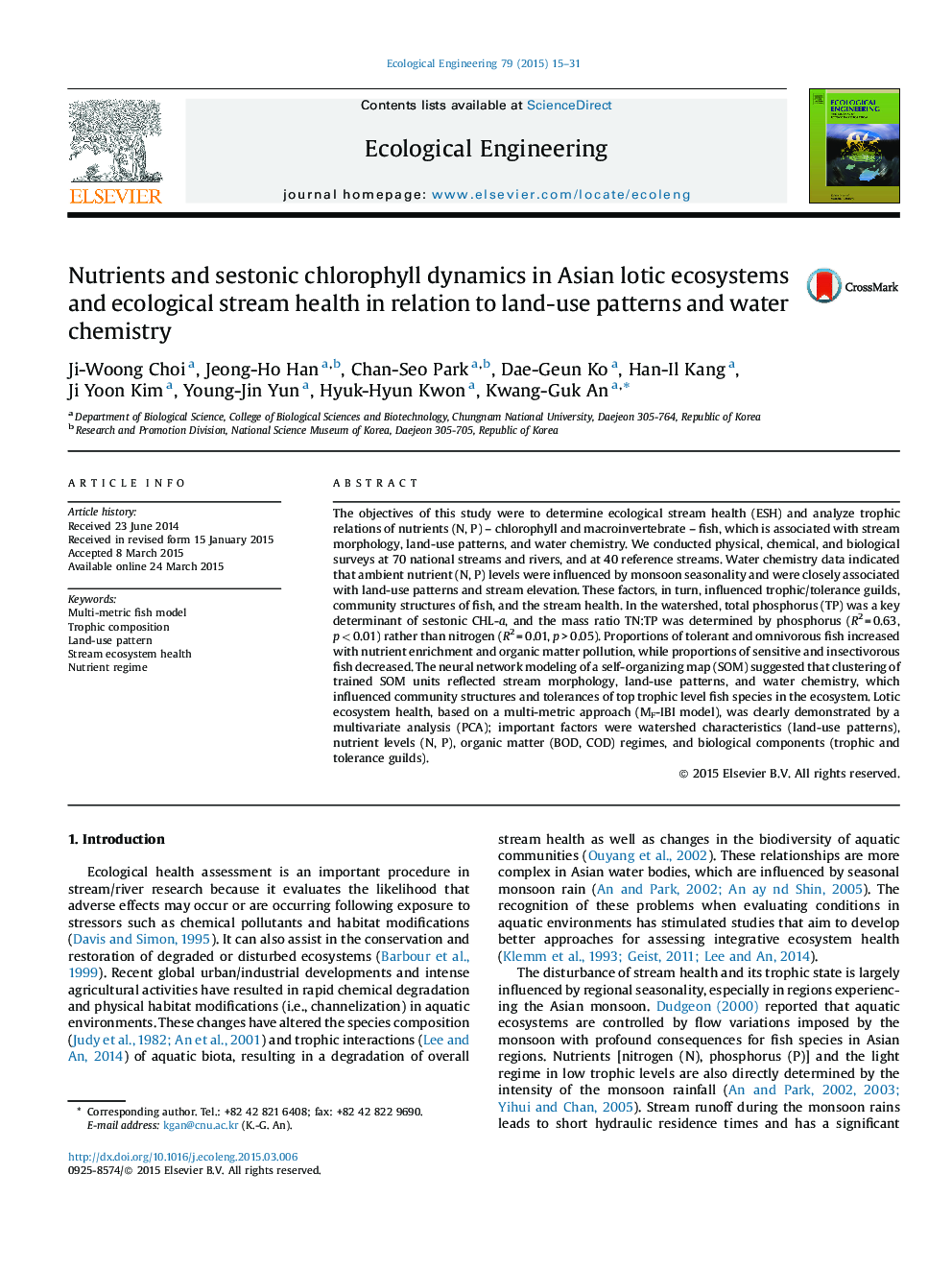| Article ID | Journal | Published Year | Pages | File Type |
|---|---|---|---|---|
| 4389114 | Ecological Engineering | 2015 | 17 Pages |
The objectives of this study were to determine ecological stream health (ESH) and analyze trophic relations of nutrients (N, P) – chlorophyll and macroinvertebrate – fish, which is associated with stream morphology, land-use patterns, and water chemistry. We conducted physical, chemical, and biological surveys at 70 national streams and rivers, and at 40 reference streams. Water chemistry data indicated that ambient nutrient (N, P) levels were influenced by monsoon seasonality and were closely associated with land-use patterns and stream elevation. These factors, in turn, influenced trophic/tolerance guilds, community structures of fish, and the stream health. In the watershed, total phosphorus (TP) was a key determinant of sestonic CHL-a, and the mass ratio TN:TP was determined by phosphorus (R2 = 0.63, p < 0.01) rather than nitrogen (R2 = 0.01, p > 0.05). Proportions of tolerant and omnivorous fish increased with nutrient enrichment and organic matter pollution, while proportions of sensitive and insectivorous fish decreased. The neural network modeling of a self-organizing map (SOM) suggested that clustering of trained SOM units reflected stream morphology, land-use patterns, and water chemistry, which influenced community structures and tolerances of top trophic level fish species in the ecosystem. Lotic ecosystem health, based on a multi-metric approach (MF-IBI model), was clearly demonstrated by a multivariate analysis (PCA); important factors were watershed characteristics (land-use patterns), nutrient levels (N, P), organic matter (BOD, COD) regimes, and biological components (trophic and tolerance guilds).
